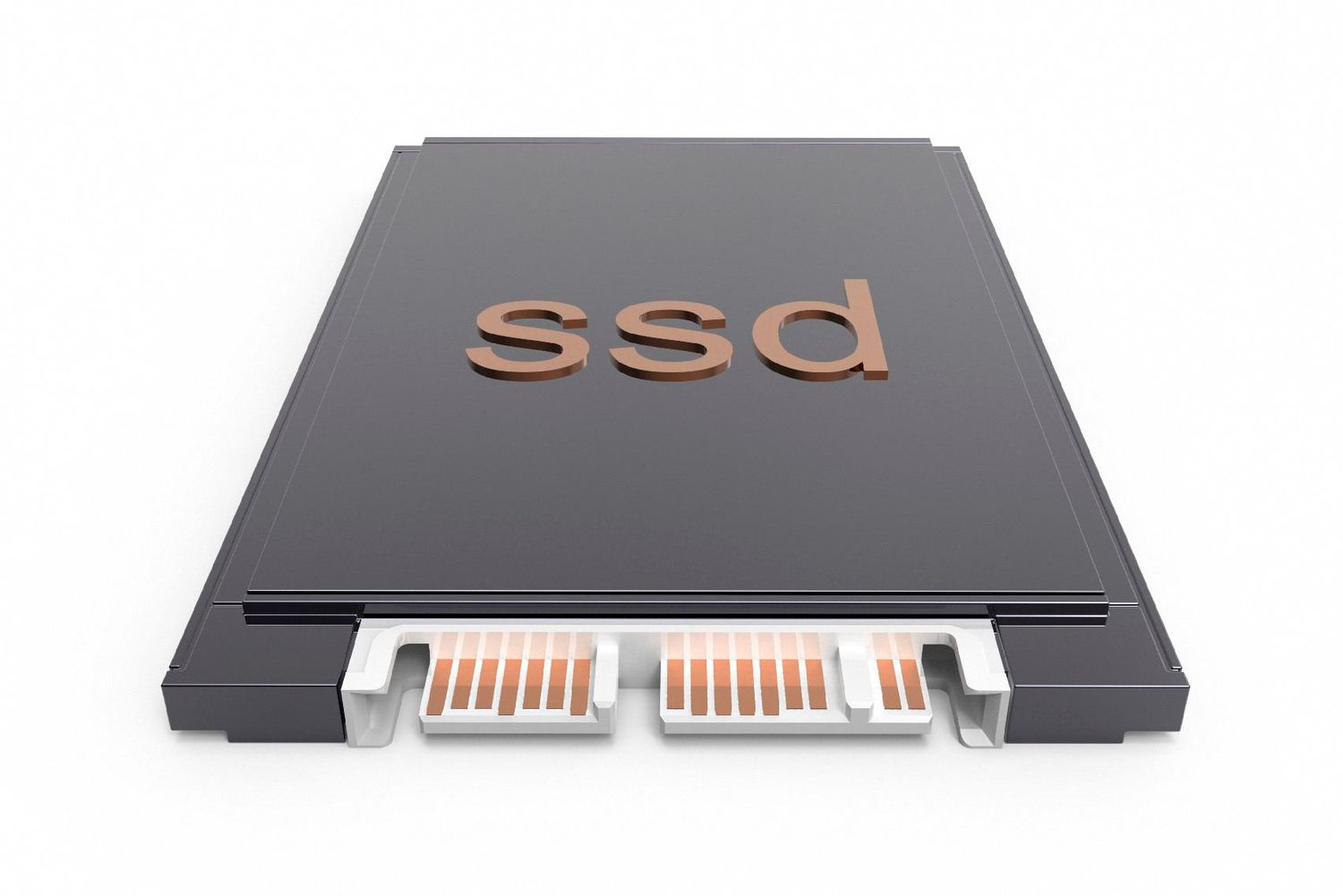How to Clean Up SSD
Solid State Drives (SSDs) boast superior performance when compared to traditional Hard Disk Drives (HDDs), offering faster access speeds, enhanced durability, and improved power efficiency. Nevertheless, to maintain an SSD’s peak performance and longevity, it is essential to regularly purge the drive of redundant files and fine-tune its operation.
In this guide, we'll explore the importance of keeping your SSD clean, provide step-by-step instructions for effective SSD maintenance, and weigh the pros and cons of various cleaning strategies.
Short answer: To clean up an SSD, use the built-in disk cleanup tool, delete unnecessary files, and ensure TRIM is enabled to optimize performance and longevity.
- How to Clean SSD:The Importance of Regular SSD Maintenance
- How to Clean SSD Space:Steps to Clean Your SSD Safely
- How to Wipe Clean a SSD: Comparative Table of SSD Cleaning Methods
- Frequently Asked Questions about SSD Cleaning
How to Clean SSD:The Importance of Regular SSD Maintenance

Regular maintenance of an SSD isn’t just a good practice—it’s crucial for several reasons:
Conserving Storage Space: When an SSD approaches its storage capacity limits, you may notice a dip in its performance.
Additionally, SSDs require some breathing room to perform operations like TRIM, which is crucial for maintaining the drive’s efficiency and speed. Keeping at least 10-15% of the SSDs capacity free is advisable to ensure these operations run smoothly.
Eliminating Clutter: Over time, SSDs accumulate digital temporary files, system logs, remnants of old software, and so on.
This not only eats up valuable space but can also slow down your system and, in some cases, cause operational glitches.
Regularly sweeping these digital cobwebs with cleanup tools or system utilities is a smart way to keep your SSD in tip-top shape, for example, if you work with 4K Resolution files and want to have fastest ssd for video editing.
Ensuring Efficient Data Management: An SSD organizes data using a file system, which might vary depending on your operating system (e.g., NTFS for Windows, APFS for Mac, EXT4 for Linux).
Although SSDs don’t suffer from fragmentation in the same way HDDs do, file organization and management can still become inefficient over time.
To avoid potential performance hiccups, use file system optimization tools to keep the SSD's data management sharp and effective.
How to Clean SSD Space:Steps to Clean Your SSD Safely

Maintaining an SSD involves a straightforward set of procedures to ensure it's running efficiently. Here how you can go about it:
Utilizing Windows’ Built-in Utilities: Windows is equipped with several maintenance tools that can help you keep your SSD in good shape.
- Disk Cleanup: This utility helps you remove files that are no longer needed, such as system temporary files, error logs, and remnants of software updates. To access Disk Cleanup, search for it in the Start menu, select your SSD, and choose the files you want to clear.
- Optimize Drives: Formerly known as defragmentation, this tool is SSD-aware and runs optimization processes like TRIM, which helps the SSD manage deleted files better, thus maintaining its speed. You can find this tool by searching for "Optimize Drives" in the Start menu, selecting your SSD, and clicking "Optimize."
Employing Third-Party Cleaning Software: Several dedicated applications exist to aid in SSD maintenance.
- CCleaner: A widely-used utility that can help clear out junk files, manage startup items, and clean up the registry. After downloading and installing CCleaner, select the types of data you wish to remove and initiate the cleaning process.
- CrystalDiskInfo: This tool is more diagnostic in nature, providing detailed information on the health and performance of your SSD. It's particularly useful for monitoring the drive’s condition and predicting potential issues. After installation, launch the program, and it will display the health status and statistics of your SSD.
- Kingston SSD Manager: If you have a Kingston SSD, this proprietary tool can be a valuable resource for drive management. It offers features for monitoring the drive's health, updating firmware, and securely erasing data.
Each method and tool can be beneficial depending on your needs. For general maintenance, Windows tools may suffice.
However, for more detailed analysis or managing specific brands of SSDs, third-party software can provide additional features and insights.
Always ensure you have backups before performing operations that can affect data, like firmware updates or secure erasing.
How to Wipe Clean a SSD: Comparative Table of SSD Cleaning Methods
To compare different methods of cleaning an SSD, you can use the following table that shows their pros and cons:
| Method | Advantages | Disadvantages |
|---|---|---|
| Disk Cleanup | Simple and quick way to remove unnecessary files from the disk and free up space for TRIM. | Does not remove all junk files, such as log files, update files, etc. Does not optimize the file system or fix registry errors. |
| Optimize Drives | Effective way to optimize the file system, run TRIM, and reduce file fragmentation. | Can take a lot of time and system resources. May not be available for some types of SSDs or file systems. |
| CCleaner | Powerful and free tool for cleaning SSDs of junk files, fixing registry errors, managing startups, etc. | Can be risky for the system if used incorrectly or without caution. May contain unwanted programs or ads. |
| CrystalDiskInfo | Useful and free program for checking the status and performance of SSDs and analyzing various disk parameters. | Does not allow cleaning or optimizing SSDs, only monitoring them. Does not support some types of SSDs or interfaces. |
| Kingston SSD Manager | Convenient and free program for managing and optimizing Kingston SSDs. | Works only with Kingston SSDs. Can erase all data from the disk when restoring it to factory settings. |
Frequently Asked Questions about SSD Cleaning
How to clean an SSD without formatting it?
If you don't want to format your SSD, there are other methods to clean it without losing data, such as:
Using the Eraser program. This is a free program that allows you to securely erase data from an SSD using various overwrite algorithms. To use this program, download it from the official website, install it on your computer, and run it.
Then, select your SSD from the list of available drives, click the "Erase Schedule" button, and choose which files or folders you want to erase.
After that, click "OK" and wait for the erasing process to complete.
Using the Parted Magic program. This is a paid program that allows you to perform various operations on SSDs, including cleaning, formatting, cloning, testing, and more.
To use this program, download it from the official website, create a bootable USB drive or CD, and boot your computer from it.
Then, select your SSD from the list of available drives, click the "Erase Disk" button, and choose the erasing method you want to use. After that, click "OK" and wait for the erasing process to complete.
How to recover data from a cleaned SSD?
If you accidentally or intentionally cleaned your SSD and lost important data, there is a chance to recover it using specialized data recovery programs for SSDs, such as:
EaseUS Data Recovery Wizard: This is one of the most popular and effective programs for recovering data from SSDs, HDDs, USB drives, SD cards, and other storage devices.
To use this program, download it from the official website, install it on your computer, and run it.
Then, select your SSD from the list of available drives, click the "Scan" button, and wait for the scanning to finish. After that, choose which files you want to recover and click "Recover."
Stellar Data Recovery: This is another reliable and powerful program for recovering data from SSDs, HDDs, USB drives, SD cards, and other storage devices.
To use this program, download it from the official website, install it on your computer, and run it.
Then, select the type of data you want to recover, choose your SSD from the list of available drives, click the "Scan" button, and wait for the scanning to finish. After that, select which files you want to recover and click "Recover."
How to update SSD firmware?
Updating SSD firmware is important as it can improve the performance, reliability, and compatibility of the drive, as well as fix potential errors or issues. To update SSD firmware, follow these steps:
- Identify the model and firmware version of your SSD. You can do this using programs like CrystalDiskInfo or Kingston SSD Manager, which display information about the drive, including its model and firmware version;
- Download the latest firmware version for your SSD from the official website of the drive manufacturer. Typically, firmware updates come in the form of files with extensions like .bin, .iso, .exe, or others, containing the necessary data for updating the drive;
- Follow the manufacturer's instructions for updating the SSD firmware. The process may vary depending on the type of firmware and drive. Some firmware updates can be applied directly from within Windows, while others may require booting from a bootable USB drive or CD. Follow the manufacturer's instructions carefully and do not disconnect the drive or the device during the update to avoid damaging the drive or data loss;
- Verify the result of the firmware update. After completing the update, reboot your device and check that the drive is functioning normally and that its firmware has been updated to the latest version. This can be done using the same programs you used to identify the model and firmware version.
How to Clean Up SSD: Last Words

In conclusion, taking proper care of your SSD through regular maintenance, cleaning, and firmware updates ensures that you continue to enjoy the numerous benefits of this advanced storage technology for years to come.
By following the guidelines outlined in this guide, you can maximize the lifespan and performance of your SSD, ultimately enhancing your computing experience.
You might also be interested in:
